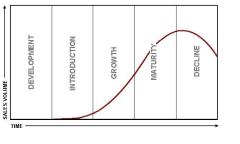April 6, 2012
 Reading Body Language
Reading Body Language
As an entrepreneur, business owner or professional, body language and attitude become critically important in face-to-face meetings. It can be the difference between success and failure. In reading body language, physical cues and tones in speech can signal a leader, partner or customer a certain way and trigger a response accordingly.
It is best to create and to exude a positive image and body language, which will in most case, trigger more positive responses than negative ones. On the flip side, you can imagine what type of response you will get from a partner or customer reading body language that is unfriendly, appears uninterested, full of inappropriate gestures, and is all around negative.
Body language will tell people, for example, if you are interested, alert, attentive, happy, relaxed, angry, aggressive or bored. Body language is one of the non-verbal signals that you will give off to create or not create a great impression. Body language from some reports accounts for ~ 90% of all communications between parties, and hence the importance when reading body language of individuals.
 Reading Body Language – Body Language Signs
Reading Body Language – Body Language Signs
First impressions are everything. A leader, investor or partner will observe your initial behaviours, immediately reading body language you exude.
It may not matter who you are, but how you behave in a professional manner in an initial meeting. A leader or investor may be looking to meet with you to determine what type of person you are, how professional you are, and how you fit in to meet common objectives and goals.
Carefully observe and be cognizant of how you are in a meeting. Closed body stances such as cross arms or postures pointing away from clients are problematic and show behavior hinging on avoidance, non-acceptance and non-openness. Appropriate upright body stances towards the participant help in saying you are interested in the person, topic, goal, and that you are genuine and there to assist or join in. If you are slouched over, leaning to one side or using the advantages of ergonomic chairs to lean way back, chances are you are giving the wrong signal in that you are not interested, you are not serious, or that you are not listening and engaged in conversation.
Reading Body Language – Eye Contact
Eye contact with the in-house audience is critically important in making a connection with the people there. Good eye contact will inform the audience, leaders, and partners that you are genuinely interested. Great eye contact strengthens the communication and connection between two people, and creates a richer communication experience. If you don’t maintain frequent eye contact, parties may be receiving a signal that you are not interested. It is also distracting when speakers or listeners’ eyes and body wander all over the place.
Reading Body Language – Hand Gestures
Watch and ensure appropriate hand gestures are made by you. Hand waving and arm flaying motions may set a negative cues, whereas slight hand movements emphasizing points may be appropriate. Another blog could be written on appropriate hand and body gestures applicable to in business environments where the culture is different that North America. Be sure you seek advice about conduct in face-to-face meetings in other countries. Selfgrowth.com has some additional great tips on body language.
Reading Body Language – Attitude
Go in with a positive attitude, even though is some circumstances you may not agree or want to be there. As mentioned staying positive will rub off on others and you will most likely receive a positive response. In some cases, you may even experience a constructive, negative response which may be as good as a positive response. Coming in with a negative attitude will spell immediate failure in negotiations, handling difficult challenges, or in building relationships.
In some cases, you need to be a good actor, for the good of the company and your fellow colleagues. You may need to exude the positive, as your actions may impact many others in the organization…remember that.
Reading Body Language – Tips for Body Language, Attitude and Presence
- Be prepared and be professional for first impressions
- Look and act interested
- Engage in conversation
- Be polite, be courteous
- Showcase your best and what you have to offer as a person and professional
- Dress appropriately for the occasion
- Facial expressions – anything neutral to slight smiles signals the positive
- Keep an upright stature, whether sitting or standing
- Do not slouch, lean, rock, swing in chairs
- Provide slight body and hand gestures; aggressive motions – negative
- Use slight gestures to emphasis points
- Watch you tone in speech and watch language
- Ensure you use the right body signals, language for the right cultural environment
In the global, highly competitive world, you as an aggressive entrepreneur need to make positive immediate impacts with customers, partners and other successful business owners. Similar to business planning processes, plan in your head how you will act and behave in face-to-face meeting to successfully negotiate and win over people.
Business information, resources and tips for the entrepreneur
© 2012 Strategy Plan One
















